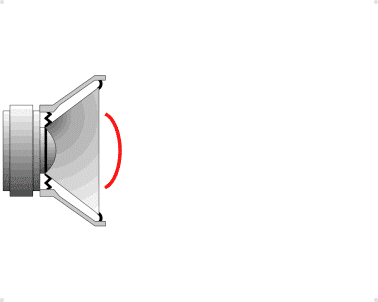- AccurateRip
- Acoustid
- AES/EBU
- AirPlay
- Amplifier
- aptX
- Audio file formats
- ASRC
- AVB
- Bit perfect jitter
- Bits: 16 or 24
- Bit perfect playback
- Bitrate
- Bluetooth
- Burn-in
- BWF
- Cables
- CDtext
- Chromecast
- Clipping
- Clock
- Codec
- Compression
- CRC
- Crossover
- Cue sheet
- DAC
- Damping
- DASH
- Digital
- Digital Room Correction
- Dither
- DLNA
- Drivers
- DoP
- DSP
- EBU R128 (loudness)
- FFT
- FireWire
- Freedb
- Gapless playback
- Generation loss
- HDMI
- Headphone listening
- Hearing
- Hires recording
- Homeplug
- I2S
- ID3
- Inter sample peak
- LDAC
- Linearity (DAC)
- Memory playback
- Music Server
- OCF
- OFC
- PCM
- Perception
- RAID
- ReplayGain
- Ripping
- RFI
- RIAA
- Router
- Sampling, up and over
- Sample Rate Conversion
- Speakers
- S/PDIF
- Storage
- Sync
- Tagging
- Toslink
- Transcoding
- UAA
- Units
- UPnP
- USB
- VST
- WiFi
- WiSA
Speakers
It all started in 1820 when Hans Christian Ørsted observed that a current running through a wire resulted in a deflection of a compass needle.
André-Marie Ampère demonstrated that parallel wires carrying currents attract or repel each other, depending on whether currents are in the same or in opposite directions.
In 1873 James Clerk Maxwell published a Treatise on Electricity and Magnetism
He proved that electricity and magnetism are the same electromagnetic force.
It took a while before this fundamental research turned in something useful: audio.
There are many fierce debates on the audio forums like
- Cables don’t /do sound different
- Amplifiers don’t /do sound different
- DACs don’t /do sound different
- etc.
Nobody says all speakers sound the same. Even studio monitors said to be designed with transparency as the design goal do sound different.
Yes all speakers color and probably affect sound quality more than any other component.
Drivers
Conventional speakers (moving coil) dominate but there are other designs.
Crossover
Our audible range is very broad (30-20.000 Hz). This is to demanding for a single speaker.
The task is split between a woofer and a tweeter so you need a crossover.
You connect the speakers to the amp with a wire. There are alternatives like bi-wiring, bi-amping and active crossovers.
Amplification
Passive speakers dominate the home, active speakers the studios.
Measurement
Speaker measurements tells a lot about the characteristics of a speaker.
Placement
The sound produced by the speakers interact with the room acoustics.

